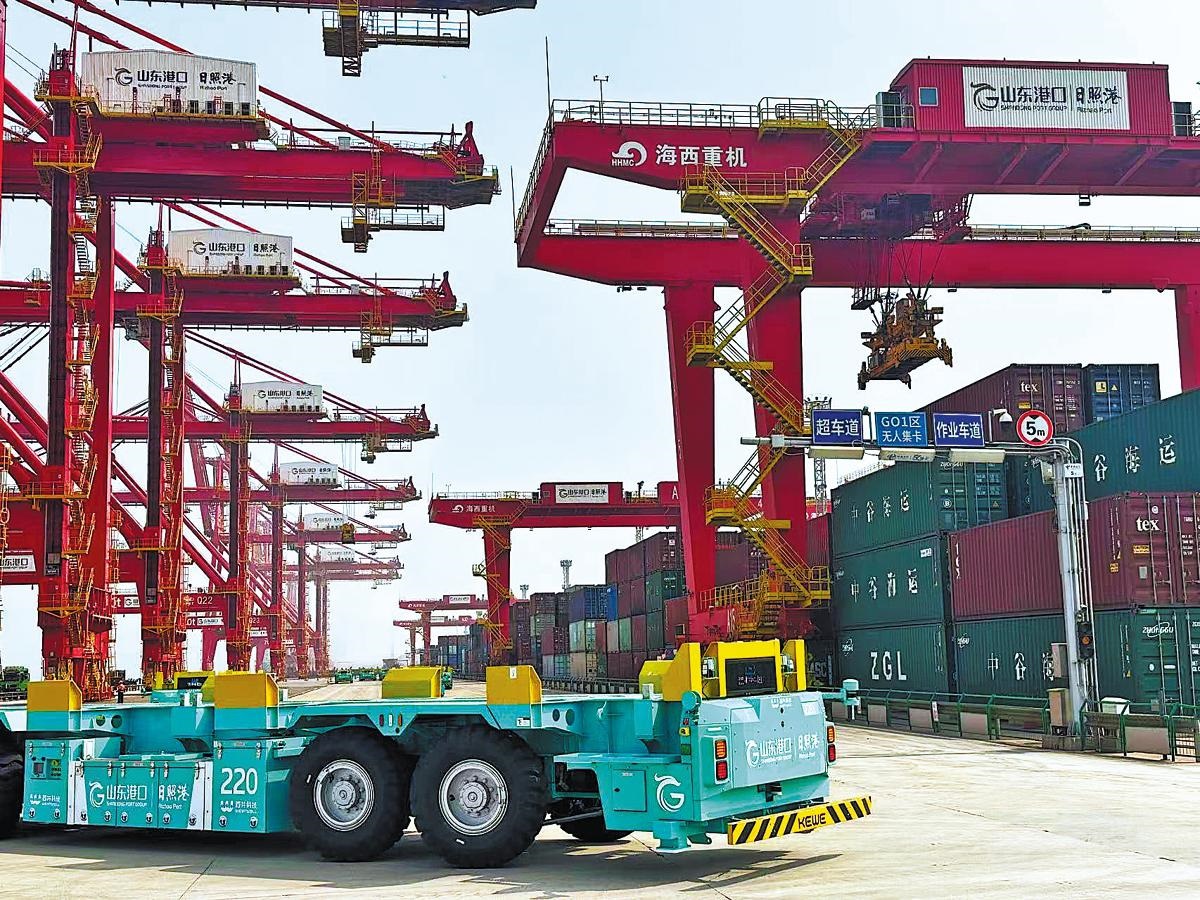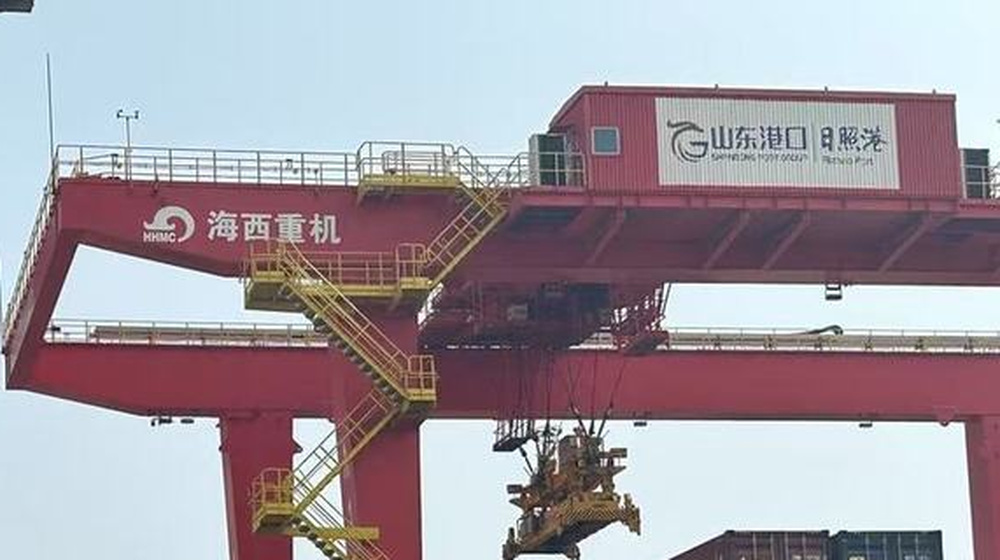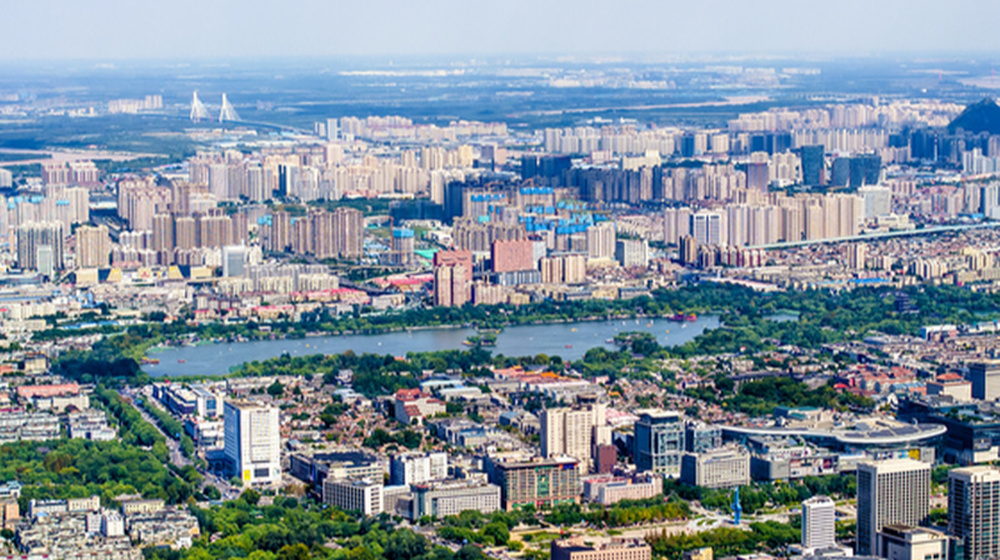
A smart guided vehicle is tested at the container field at Rizhao Port in Shandong province on Wednesday. When put into service, the vehicles will be used to shuttle containers. ZHAO RUIXUE/CHINA DAILY
Towering cranes loom over a steady stream of container ships at the Rizhao Port of Shandong Port Group, where more than 1.5 million metric tons of cargo move daily through increasingly automated terminals.
In the past year, Rizhao Port achieved 23 technological breakthroughs, propelling its transformation into a model of innovation and efficiency.
During President Xi Jinping's visit to Rizhao Port on May 22 last year, he commended the port's efforts to advance technological innovation, which has turned it from a traditional facility into a modernized operation in recent years.
Located in the south of Shandong province, the port not only ranks among the top nationwide for cargo throughput, but also offers valuable experience in upgrading traditional industries to foster new quality productive forces, he said.
Driven by technological advancement, Rizhao Port has evolved into a global hub for the transshipment of energy and bulk raw materials since its construction following China's reform and opening-up in the late 1970s.
The port's automated container terminal hums with robotic rail cranes handling operations and autonomous vehicles ferrying containers. "These are our newly tested smart guided vehicles, which use the Beidou navigation satellite system to calculate optimal routes in real time," said Xu Guannan, manager of the port's technology research and development department.
"Instead of performing traditional parallel parking, they can approach the area by moving sideways like a crab. There's no need for complex alignment adjustments, which makes them more flexible," Xu said.
Twelve new lightweight, domestically designed cranes will soon be deployed at the terminal.
"These new cranes have smart electric control systems that replace imported ones, while their composite structures reduce each unit's weight by 70 metric tons and cut energy use by 15 percent," said Wang Yandi, director of the port's innovation center. Each crane saves about 1 million yuan ($138,788) in construction costs, he added.
Thanks to these upgrades, overall efficiency at the terminal has increased by 9.5 percent year-on-year.
In the past, coal-handling ports were often associated with blackened industrial zones. Today, visitors to Rizhao Port are met with a cleaner view: enclosed conveyor belts transport coal from storage yards to ships, maintaining a green and dust-free environment.
This transformation stems from an intelligent system launched in December that integrates laser scanning, artificial intelligence recognition and automated holds-clearing technologies. The system has boosted operational efficiency by 30 percent while eliminating coal dust pollution.
"To build this system, we had no ready-made solutions and no examples to follow. We had to optimize algorithms ourselves. We researched, compared data and tested repeatedly," said Tian Zhendong, a senior technician at the port. "There were times we thought about quitting, but we made it."
编辑:曹晓旭








